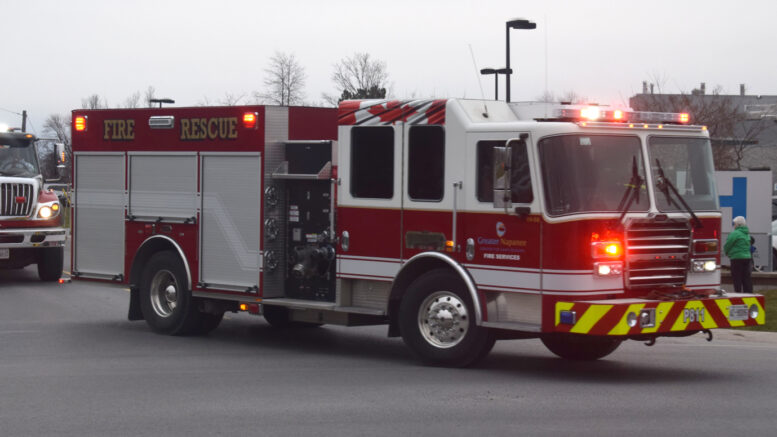Desiree DeCoste
Beaver Staff
Emergency Preparedness Week (EP Week) will run May 2-8 with the theme: be ready for anything.
“The intent of this theme is to encourage Canadians to take action to become better prepared for the range of emergencies they could face in their region,” Randy Cook, public educator with the Greater Napanee Emergency Services (GNES) expressed to The Beaver. “It aims to reduce panic and panic is a sudden sensation of fear which is strong enough to dominate or prevent reason and logical thinking. It encourages you to be prepared, make a plan and get a kit.”
When making a plan for an emergency it’s important to remember family members may not be together or may be asked to evacuate the home. Thinking about what to do in different situations and preparing a plan with every member of the family is the first step to being prepared.
“Everyone has a roll to play in an emergency,” Cook stated. “Emergency Preparedness Week is an opportunity for you to take action and ensure you are prepared.”
A plan should include, a family communications plan. During an emergency, it may be easier to reach someone using text messaging or social media or to make a long-distance call than to call someone locally (due to network damage or a jammed system). Discuss with family members which way(s) they will try to get in touch with each other. Identify one or two out-of-town contacts to call or text message to connect and share information. Be sure they live far enough away so they will not likely be affected by the same emergency.
In case an emergency forces someone to evacuate their home they should select two safe locations they could go to. One should be nearby, such as a local library or community centre. The other one should be farther away, outside the neighbourhood, in case the emergency affects a large area.
Make sure everyone in the family knows how to safely exit the home, by a main exit and an alternate one. Each person should be sure to consider his or her living situation. For instance, if they live in a high-rise and have special needs, talk to the building manager or neighbours to make special arrangements, if necessary.
Keep a listing of emergency numbers at the ready and make sure all members of the family know where they are. Teach children when and how to dial 9-1-1 and other key numbers they may need to call. Here are some numbers to consider having on this list: 9-1-1 (where available), police, fire, family doctor, Telehealth, poison control, family and friends who can lend support in a crisis, insurance contact and utility companies.
Keep the plan in an easy to reach location. A good place is with an emergency kit. Make sure everyone in the family knows where to find it. Once a year, review the plan with the entire family. Refresh the survival kit at the same time, with new food, water and other supplies.
When building a survival kit there are many things to consider.
“Getting a kit could be as simple as a hand crank light and radio, a few canned goods, maybe some blankets, some fresh drinking water, a few supplies in the house incase your asked to shelter in place,” said Cook.
Kits should include: food (non-perishable and easy-to-prepare items, enough for three days) and a manual can opener, bottled water (four litres per person for each day), medication(s), flashlight, radio (crank or battery-run), extra batteries, First-Aid kit, candles and matches/lighter, hand sanitizer or moist towelettes, important papers (identification, contact lists, copies of prescriptions, etc.), extra car keys and cash, whistle (to attract attention, if needed), Zip-lock bag (to keep things dry) and garbage bags.
Special considerations include: items for babies and small children—diapers, formula, bottles, baby food, comfort items, prescription medication, medical supplies and equipment, pet food and supplies and any other items specific to the family’s needs.
Extra supplies for evacuation to include: clothes, shoes, sleeping bags or blankets, personal items (soap, toothpaste, shampoo, comb, other toiletries) and playing cards, travel games, other activities for children
“It’s hard to get the information to public groups, school aged children, seniors that are shut in, maybe those with mobility aids that can’t get out,” Cook stated. “I think everybody depends on media outlets for a lot of their information. And don’t forget in your plan to include any pets, family and friends that may have mobility issues or need special appliances to get around or function properly, medications make sure your well stocked on any real important medications, especially now with lockdowns, self isolating, social distancing you could feel more at ease if you did have a few simple items in and around the house incase of an emergency.”

